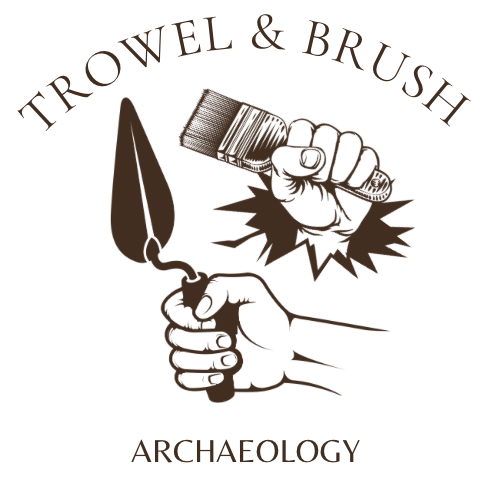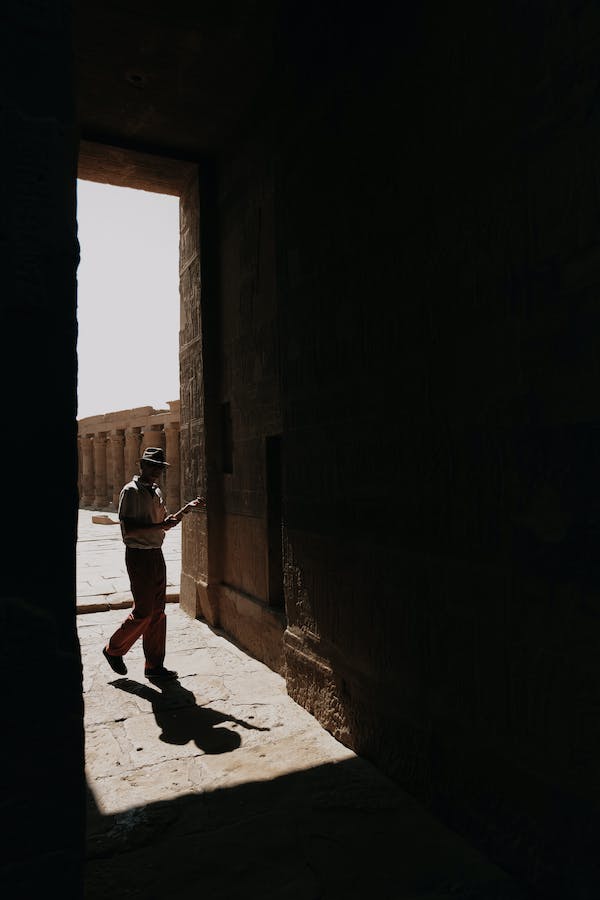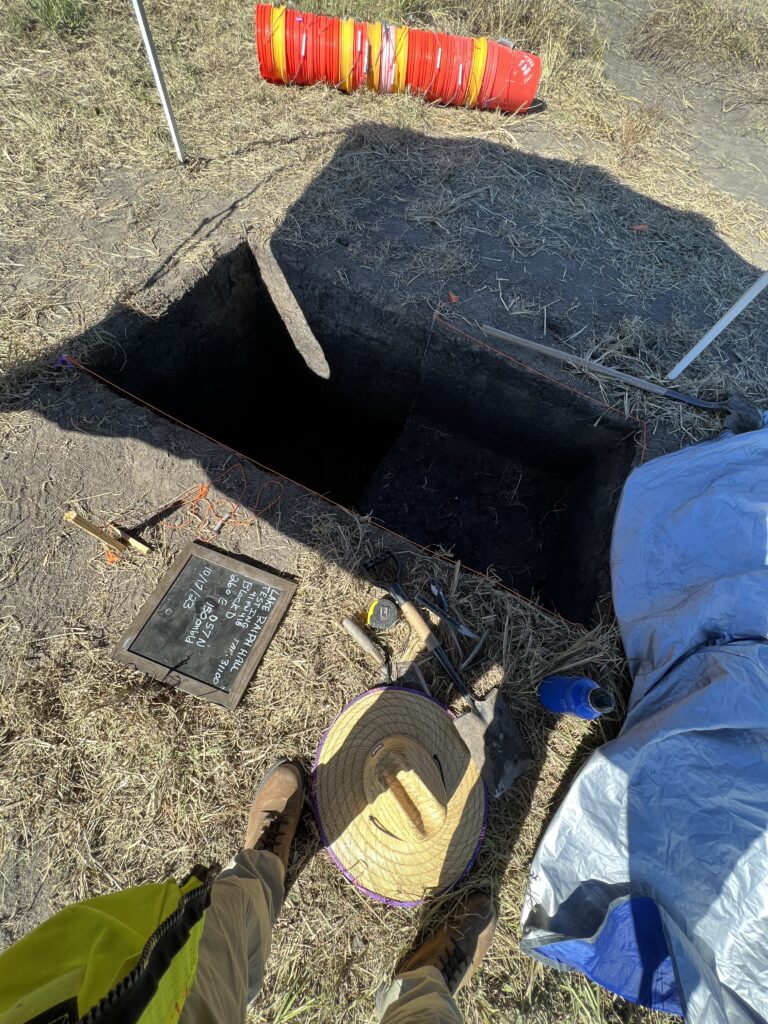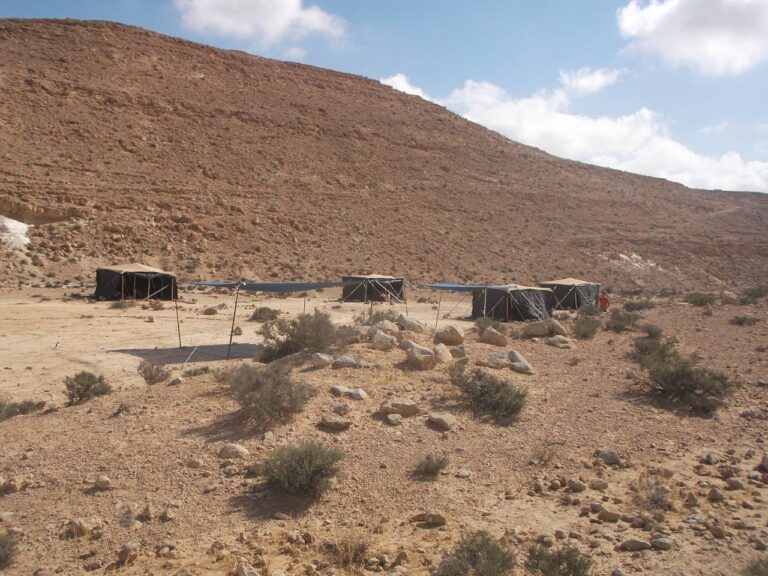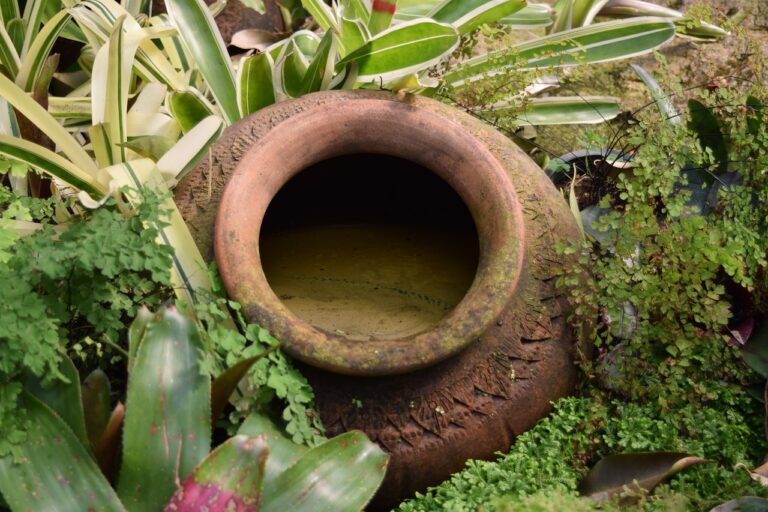What is Archaeological Excavation?
In this article, we will explore the purpose, techniques, tools, and significance of archaeological excavations, as we delve into the fascinating world of uncovering the mysteries buried beneath our feet.
Archaeological excavation is like a historical treasure hunt, where experts carefully dig and investigate ancient sites to uncover artifacts and structures. It helps us understand our shared history by revealing clues about past civilizations and their way of life.
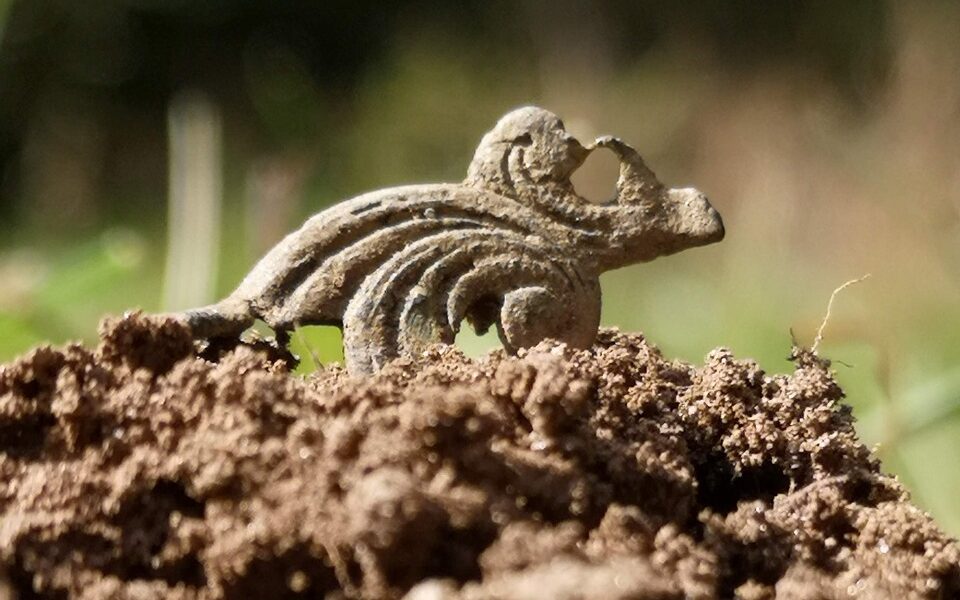
Excavating a Site
After a site survey is completed, we must determine which sites are to be excavated.
This is usually based on the importance of the sites in question.
Determining what is to be excavated depends on the objective of the research project.
The excavation strategy is highly variable, and any final decision is based on the resources and problems at hand.
Since the problem to be solved determines the site excavation strategy, it is popular to develop a hypothesis.
The hypothesis might dictate the way the site is excavated, the type of dating samples to be recovered, and the other kinds of specialists required during the project.
Excavation
The first step, if possible, is to delineate the site boundaries.
The next step is to lay out an excavation grid. The grid may be set up using a compass, or a transit.
It should be set to divide the site into squares, with a north/south and east/west axis.
Stakes should be sunk in the corner of each of the grid squares, each of which will become a pit or excavation unit.
The excavation grid should cover, at least on paper, the entire site to its boundaries.
Not every pit needs to be excavated at once.
Once the stakes are in place, they must be attached with strings to establish the edges of the excavation units.
The excavator will use these strings as guides in digging straight pit sidewalls.
If any artifacts from the sidewalls of an adjacent pit jut into the pit being excavated, they should be left in place.
The position of each artifact and feature should be measured to a fixed point.
These artifacts and features are referred to as provenience.
They are measured by depth to a fixed datum plane above the pit.
The site datum should be marked by sinking a stake in the ground. Thus, the depth in the ground for every artifact or feature can easily be measured and later studied.
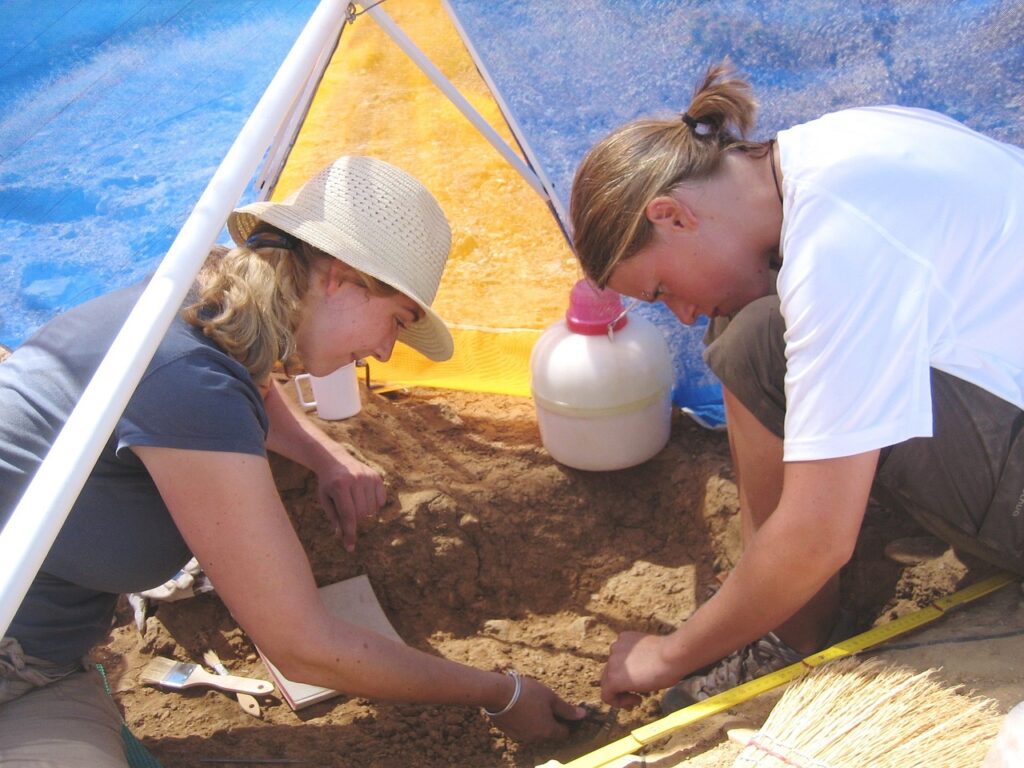
Excavation Technique
At this point, we must determine how to excavate a site.
There are several options to be considered:
- We can put in a trench.
- Dig a series of alternate trench sections.
- Dig one or several pits to determine the exact character of the site internally.
- Excavate squares in a checkerboard fashion.
Once the method and grid have been established, the next step is for the field workers to begin removing the earth.
Usually, the removal of grass and roots precedes actual excavation.
Then it is time to remove the underlying soil and sediment gradually with a trowel or shovel.
If a shovel is used, the shovel-shaving procedure should be followed; the removal of one or two centimeters of material evenly across the entire pit.
If there has been no prior excavation, the site must be excavated in arbitrary levels, which may vary from five to ten centimeters.
EQUIPMENT
All equipment needed for the excavation should be placed safely and conveniently next to the pit.
The excavation kit should be readily accessible.
Each excavator should have a set of collection bags for each level within the excavation unit.
One for artifacts, one for bones, a container for fire cracked rocks, and plenty of extra bags for unknown material to be examined later.
The excavation tools that each kit should contain are listed in my other article, which you can check out here: https://trowelandbrush.com/what-tools-do-archaeologists-need/
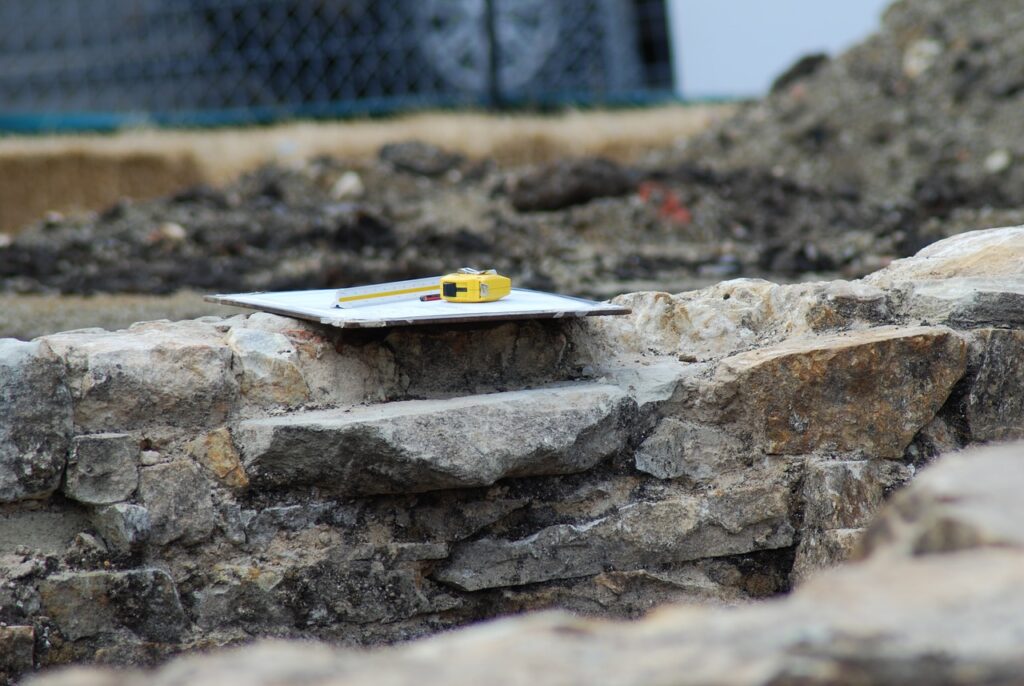
Technique
Each artifact encountered should be measured in situ (in place) for its depth below the datum.
This can be accomplished in several ways. Normally we attach a string to the base of the northwest corner stake.
Using this string with a line level attached, it is possible to achieve a level line over the pit; with a measuring tape. the excavator can measure down from that plane to the artifact in question.
In addition, the excavator must calculate the horizontal provenience by measuring the distance from at least two walls of the pit to the artifact.
When digging with a trowel, a thin layer of soil should be cut away clearly across the pit.
Five to ten-centimeter levels are commonly employed in the absence of clear or natural stratigraphy.
As the earth is removed, it should be piled in a dustpan or bucket, and from there, taken to a screen.
If artifactual material of any kind has been present but escaped your eye, it will be found, it is hoped, on the screen.
In addition to recovering artifacts while excavating. You will probably come across features of various sorts.
Features are consistent patterns or regularities in the ground, which, although not tools themselves, may be a reflection of cultural activities.
Often features are left in place until the level the excavator is working on is completely removed.
Then the excavator may return and remove the feature.
Features should be carefully photographed and drawn before they are removed.
Upon completion of each level, a photograph should be taken of the level floor.
When possible, such floors should be swept by whisk-broom or brush, and any features should be documented.
When you complete the excavation of your pit, you should carefully draw and photograph the stratigraphy of at least two walls.
Photographs are permanent records of what was on a site, while drawings help the archaeologist to study the relations of various strata to each other and cultural remains with some precision.
Concerning the extraction of certain material to be dated are as follows:
- Carbon samples for dating, whether they be charcoal, bone, shell, or soil, should always be removed with tools such as a trowel or tweezers.
Special care should be taken to not have the sample come into contact with your skin or any organic material.
They should be placed in nonreactive plastic bags or aluminum foil and transported quickly to the dating laboratory.
- Obsidian that is to be dated should also be excavated with care.
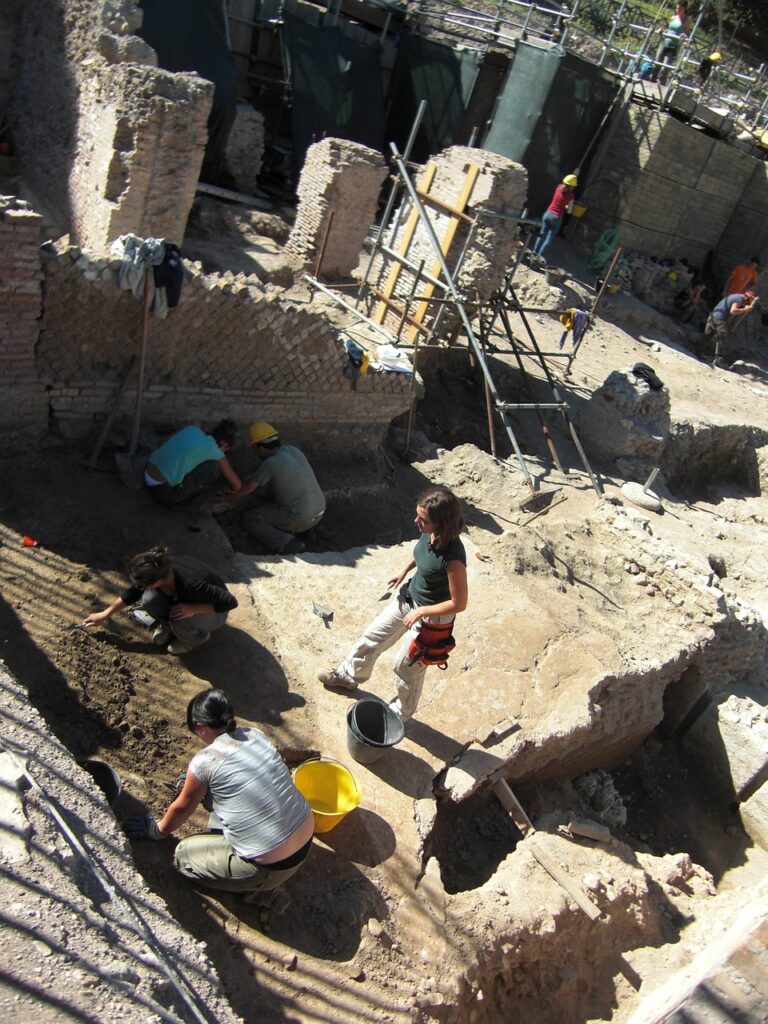
Conclusion
A general rule of thumb is to take every possible precaution in the field as far as the recording of data is concerned.
Artifacts, features, and other materials, once excavated, can lose much of their information potential if such procedures are neglected.
An archaeological dig serves as a gateway into the past, unearthing artifacts and uncovering insights about buried cultures. Through meticulous excavation methodology, these expeditions allow us to piece together the puzzle of history, illuminating our understanding of humanity’s rich and diverse heritage.
